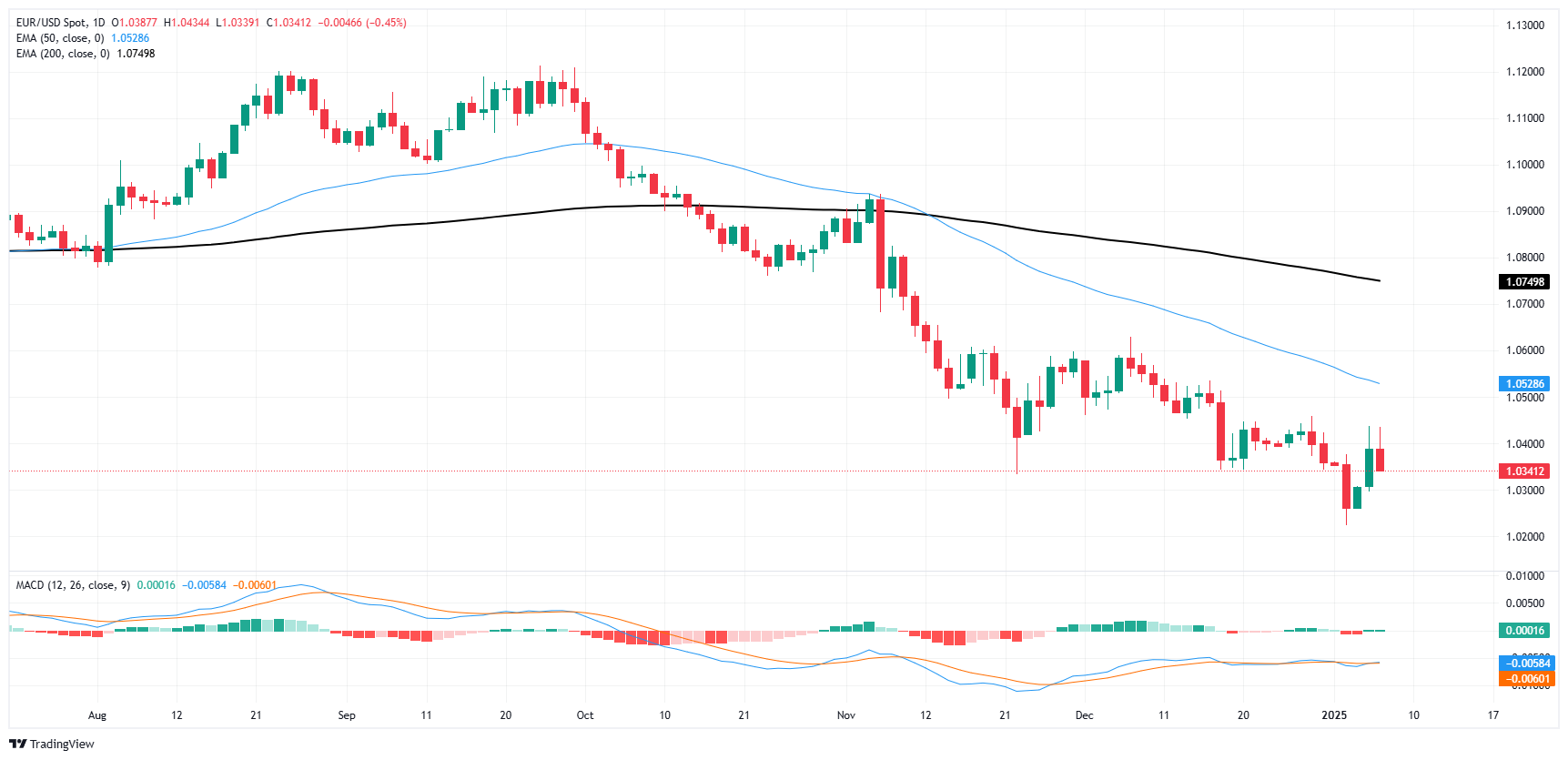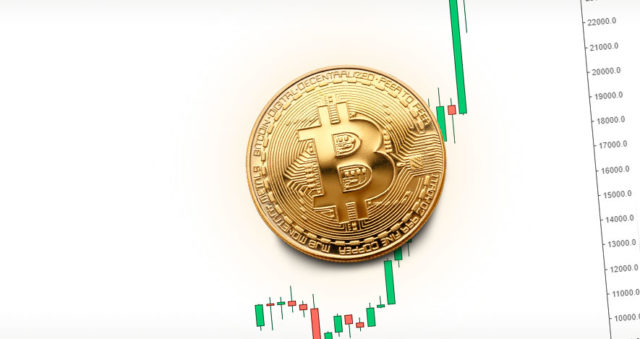- EUR/USD failed to extend a short-term technical recovery, losing 0.4% on Tuesday.
- German retail sales, EU PPI inflation, US ADP jobs preview on the agenda for Wednesday.
- Another NFP Friday looms, slowing market momentum as Fed rate cut fears weigh.
EUR/USD turned around and fell against the US Dollar on Tuesday, losing four tenths of a percent after a failed recovery from the 1.0400 level completely faded. The pair is still trading above last week’s 26-month low, but not by much. Euro bulls desperately need a change of course as the pair continues its way back towards 1.0200.
Europe’s Harmonized Index of Consumer Prices (HICP) inflation was roughly as expected, with the annualized HICP for the year ending December rising slightly to 2.4% year-on-year from 2.2% previously. However, most of the upward pressure on European inflation figures appears to be already built into previous numbers, or are non-structural elements, giving Euro traders some hope that things will continue to improve.
On the US side, the ISM Services Purchasing Managers’ Index (PMI) business activity survey results were much higher than expected, as were the prices paid for ISM Services. Both figures were for the month of December, raising fresh concerns in the market that the Federal Reserve (Fed) may not be able to deliver as many rate cuts in 2025 as investors had initially expected.
Early Wednesday, German retail sales and EU Producer Price Index (PPI) inflation data will be released, with market forecasts indicating a robust rebound in both metrics. Meanwhile, in the US, December ADP employment change figures and the latest Fed meeting minutes will be released during the next trading session. The ADP employment numbers are considered an unreliable predictor of what Friday’s Nonfarm Payrolls (NFP) data may reveal, but traders won’t let that stop them from overreacting to large deviations from forecasts. Investors will be looking for any signs that could point to a possible rate cut before June, which would include a pronounced, but not too severe, softening of the labor market.
EUR/USD Price Forecast
EUR/USD continues to turn lower while the US Dollar remains the market’s favorite entry point. The pair has lost a little over 6.5% since peaking just above 1.0900 in early November, recording a clean technical rejection of the 200-day exponential moving average (EMA), which is now descending towards the 1.0700 level. Euro bulls hoping to cement a new bull run from multi-year lows will first have to contend with the 50-day EMA, which is declining towards 1.0500.
EUR/USD Daily Chart
Euro FAQs
The Euro is the currency of the 19 countries of the European Union that belong to the eurozone. It is the second most traded currency in the world, behind the US dollar. In 2022, it accounted for 31% of all foreign exchange transactions, with an average daily turnover of more than $2.2 trillion per day. EUR/USD is the most traded currency pair in the world, accounting for an estimated 30% of all transactions, followed by EUR/JPY (4%), EUR/GBP (3%) and EUR/AUD (2 %).
The European Central Bank (ECB), headquartered in Frankfurt, Germany, is the reserve bank of the eurozone. The ECB sets interest rates and manages monetary policy. The ECB’s primary mandate is to maintain price stability, which means controlling inflation or stimulating growth. Its main tool is the increase or decrease in interest rates. Relatively high interest rates (or the expectation of higher rates) tend to benefit the euro and vice versa. The Governing Council of the ECB makes decisions on monetary policy at meetings held eight times a year. Decisions are made by the directors of the Eurozone’s national banks and six permanent members, including ECB President Christine Lagarde.
Eurozone inflation data, measured by the Harmonized Index of Consumer Prices (HICP), are an important econometric indicator for the euro. If inflation rises more than expected, especially if it exceeds the ECB’s 2% target, it forces the ECB to raise interest rates to bring it back under control. Relatively high interest rates compared to their counterparts tend to benefit the euro, making the region more attractive as a place for global investors to park their money.
The published data measures the health of the economy and may have an impact on the euro. Indicators such as GDP, manufacturing and services PMIs, employment and consumer confidence surveys can influence the direction of the single currency. A strong economy is good for the Euro. Not only does it attract more foreign investment, but it may encourage the ECB to raise interest rates, which will directly strengthen the euro. Otherwise, if economic data is weak, the Euro is likely to fall. Economic data for the four largest eurozone economies (Germany, France, Italy and Spain) are especially significant, as they represent 75% of the eurozone economy.
Another important data that is published about the Euro is the trade balance. This indicator measures the difference between what a country earns from its exports and what it spends on imports during a given period. If a country produces highly in-demand export products, its currency will gain value simply from the additional demand created by foreign buyers seeking to purchase those goods. Therefore, a positive net trade balance strengthens a currency and vice versa in the case of a negative balance.
Source: Fx Street
I am Joshua Winder, a senior-level journalist and editor at World Stock Market. I specialize in covering news related to the stock market and economic trends. With more than 8 years of experience in this field, I have become an expert in financial reporting.







